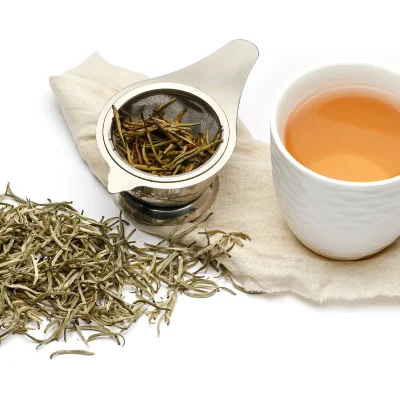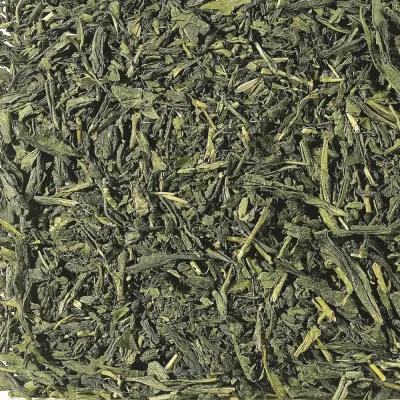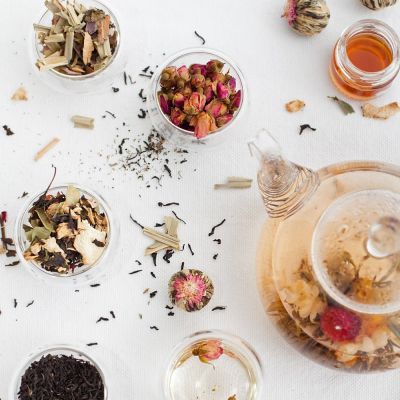Black tea belongs to the category of fully fermented teas. Its quality is characterized by distinct features. The tea leaves themselves exhibit a rich, deep red hue. When brewed, it yields a vibrant red tea soup, complemented by the sight of red – tinged leaves. The flavor profile is a harmonious blend of sweetness and mellowness, creating a truly delightful sensory experience. In the realm of the Chinese tea industry, black tea holds a significant position, with its export volume accounting for approximately 50% of the country’s total tea production.
When black tea was first introduced in its nascent stages, it was known as “dark tea” or “wu cha” in Chinese. This historical naming convention is the reason behind its English moniker “Black Tea”, rather than the more seemingly straightforward “Red Tea”. The production process of black tea is a meticulous and well – defined sequence of four crucial steps. It commences with withering, during which the fresh tea leaves are spread out to allow moisture to gradually evaporate, softening the leaves and priming them for the subsequent processes. Next comes the rolling stage, where the leaves are carefully rolled to break down the cell structure, releasing natural juices and enzymes that are essential for the fermentation process. Fermentation is the core and most transformative stage. During this period, the leaves react with oxygen under controlled conditions, which not only changes the color of the leaves to red but also develops the characteristic flavor and aroma of black tea. Finally, the tea leaves are dried to halt the fermentation process and preserve their quality, ensuring they are ready for packaging and distribution.
Basic Classification of Black Tea
- Souchong Black Tea
- Zhengshan Xiaozhong stands as a prime example within this category. Originating from the Wuyi Mountains in Fujian province, Zhengshan Xiaozhong has a unique and complex flavor. It often carries a subtle smoky aroma, which is imparted during the drying process over pinewood fires. This gives it a distinct character that is highly sought – after by tea enthusiasts around the world.
- Congou Black Tea
- Dianhong, also known as Yunnan Black Tea, hails from the southwestern province of Yunnan. The tea leaves are large and plump, resulting in a bold and robust flavor. Dianhong is celebrated for its rich, malty notes and a long – lasting, sweet aftertaste.
- Qihong, or Keemun Black Tea, is produced in Qimen county, Anhui province. It is renowned for its delicate floral and fruity aroma, often described as having a hint of orchid fragrance. The flavor is smooth and refined, making it a favorite among connoisseurs.
- Minhong, or Fujian Black Tea, encompasses a variety of sub – types. It has a diverse flavor profile, with some varieties offering a sweet and mellow taste, while others may have a more pronounced, earthy undertone.
- Broken Black Tea
- Leaf tea within the broken black tea category retains a relatively larger leaf structure. It provides a balanced flavor and a pleasant mouthfeel.
- Flake tea, as the name implies, consists of smaller, flaky pieces of tea leaves. It is often used in tea blends and can contribute a unique texture and flavor to the overall mix.
- Fannings, or fine – cut tea particles, are known for their quick – brewing properties. They are commonly used in tea bags and can produce a strong – flavored cup of tea in a short time.
- Broken tea, with its irregularly shaped pieces, also has its own characteristics in terms of flavor extraction and brewing speed.
Exquisite Varieties of Black Tea
- Keemun Black Tea, as mentioned before, is a paragon of elegance in the world of black teas. Its complex aroma and refined flavor have made it a staple in high – end tea markets globally.
- Zhengshan Xiaozhong, with its historical significance and unique flavor, remains a classic choice for those who appreciate the traditional craftsmanship of black tea production.
- Minhong Black Tea, with its diverse range of flavors, offers a wide selection for tea lovers to explore.
- Dianhong Black Tea, with its bold and full – bodied taste, caters to those who prefer a more robust tea experience.
- Yixing Black Tea, produced in Yixing, Jiangsu province, has its own unique charm. It often has a smooth, sweet flavor and a delicate aroma.
- Zhenghe Congou, originating from Zhenghe county in Fujian, is known for its rich flavor and high – quality tea leaves.
- Chuanhong Congou, from Sichuan province, presents a distinct flavor profile, influenced by the local terroir and production methods.
- Jin Junmei, a relatively new but highly prized variety, is made from the tenderest buds of the tea plant. It has a luxurious, sweet flavor and a complex aroma, often featuring notes of honey, flowers, and fruits.
Tips
The tea connoisseur offers some valuable insights. When it comes to drinking black tea, there are indeed certain aspects to consider. Given that black tea is fully fermented, it is relatively gentle on the stomach, making it an ideal choice for those looking to nourish their digestive system. People with a cold constitution, who tend to have a lower internal body temperature, can benefit greatly from consuming black tea. By regularly drinking black tea, they can help warm and invigorate the yang qi within their bodies, promoting better overall health and well – being.
Moreover, black tea is lauded for having the most potent anti – oxidation effect among all tea types. This property makes it an excellent beverage for female consumers. Regular consumption of black tea can have a positive impact on the skin, helping to improve its complexion, reduce the appearance of fine lines and wrinkles, and enhance overall skin radiance. Additionally, it has been shown to boost the immune system, thereby helping to prevent colds and other common illnesses.
For the average person, maintaining a daily intake of 2 to 3 cups of black tea is considered optimal. This quantity allows one to fully enjoy the health benefits of black tea without over – consuming caffeine or other components. However, individual preferences and health conditions may vary, so it’s always advisable to adjust the amount according to personal needs.




